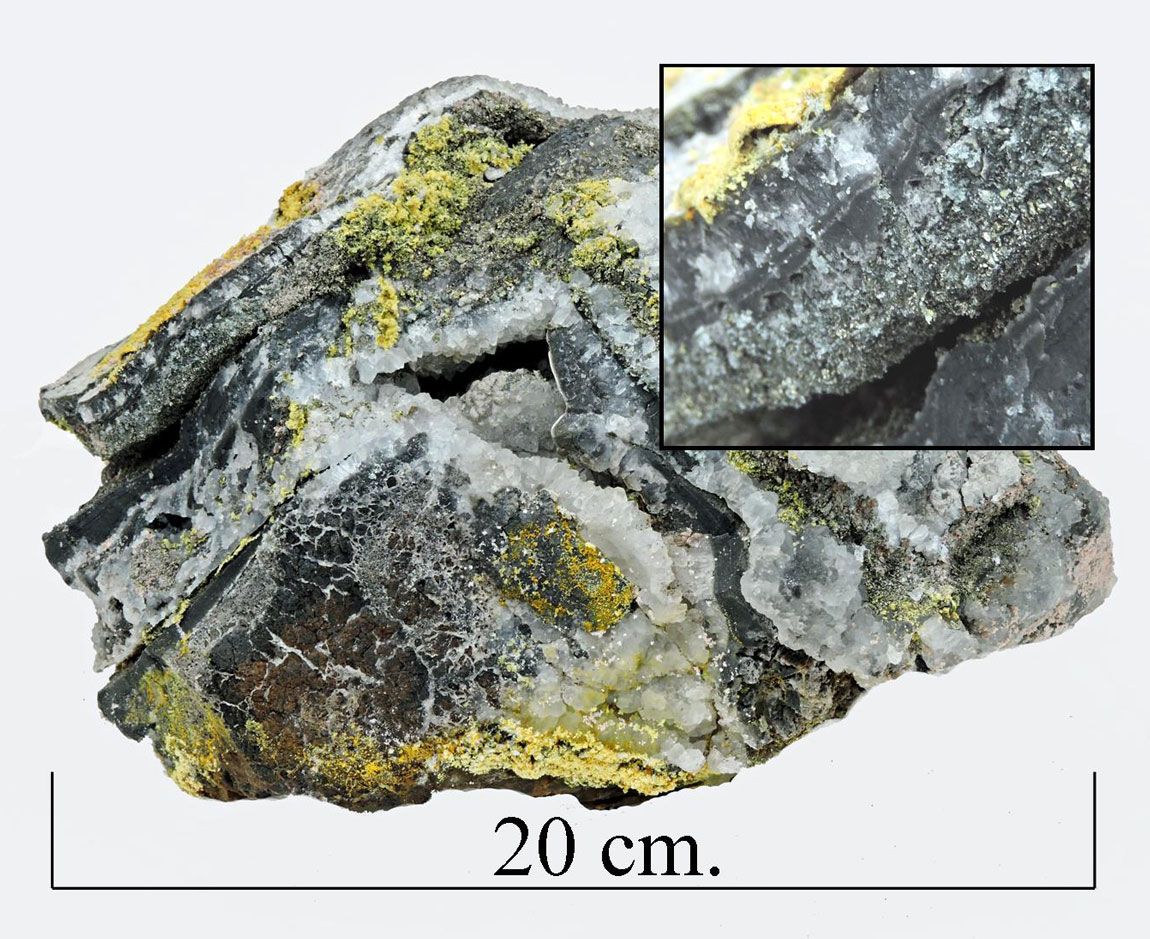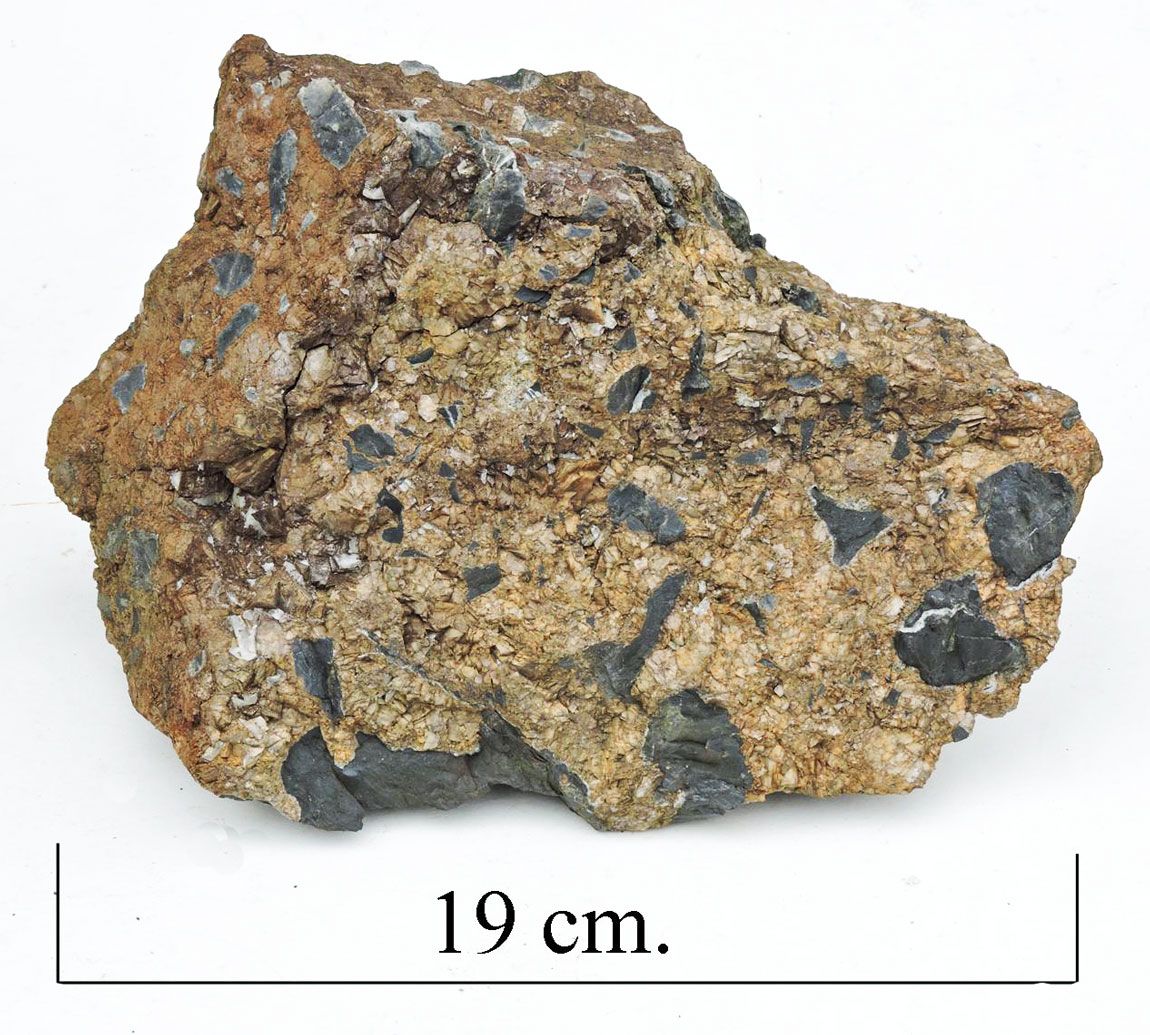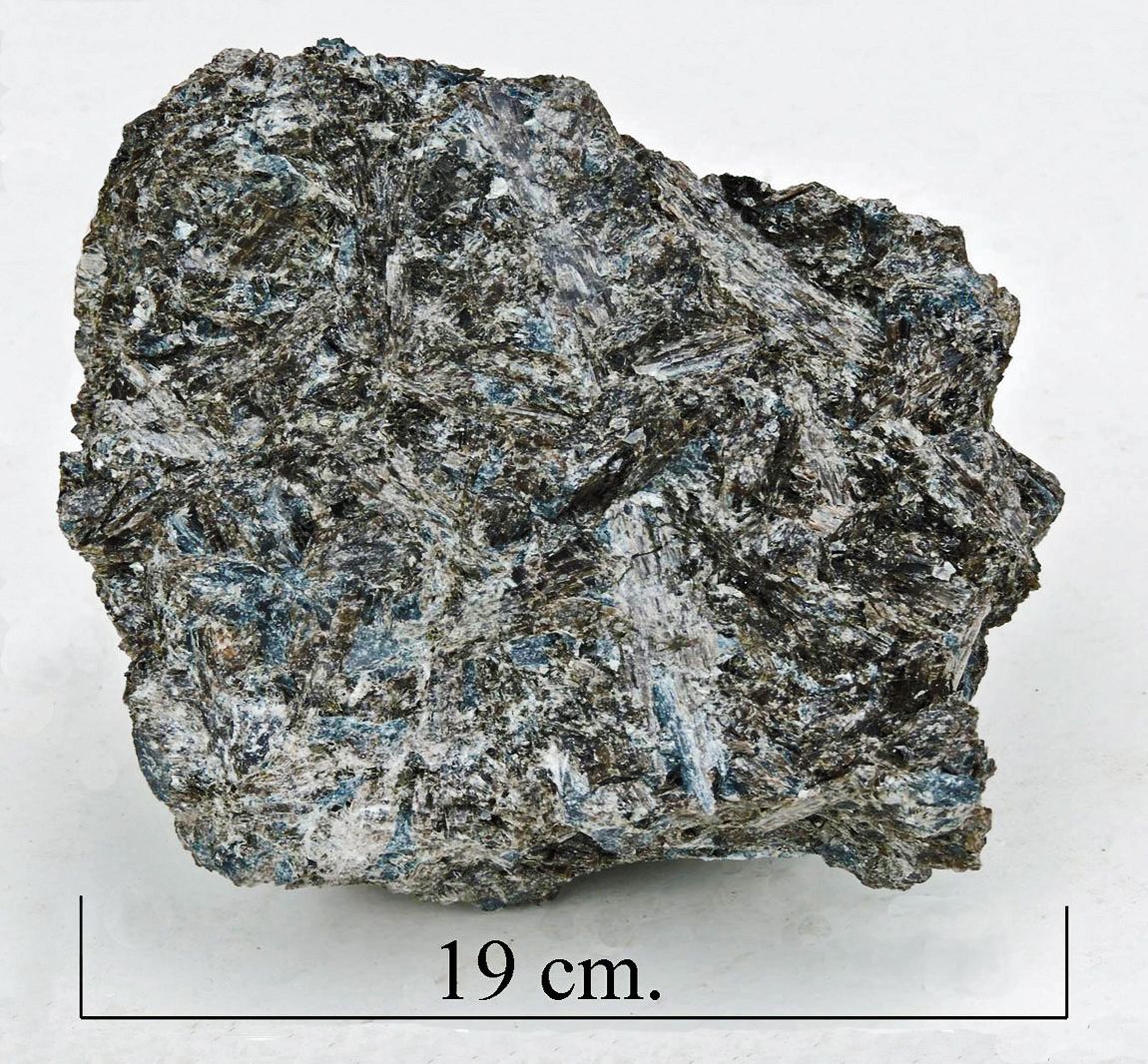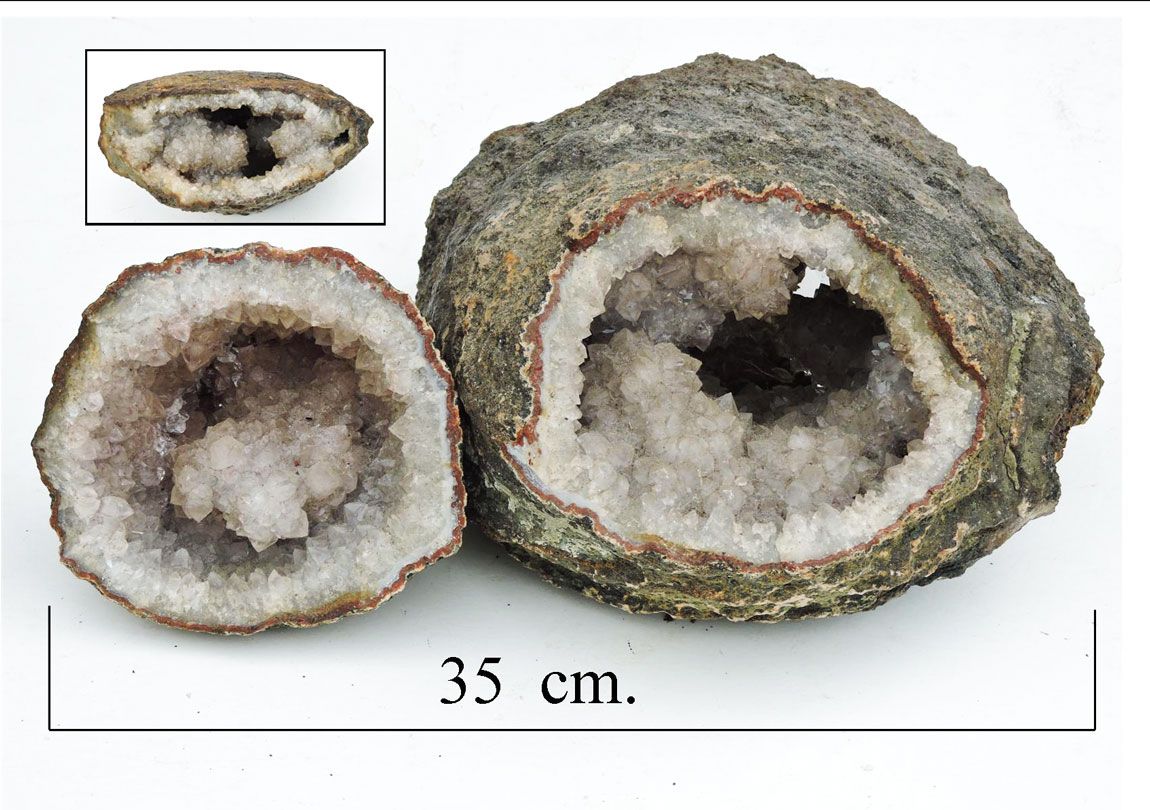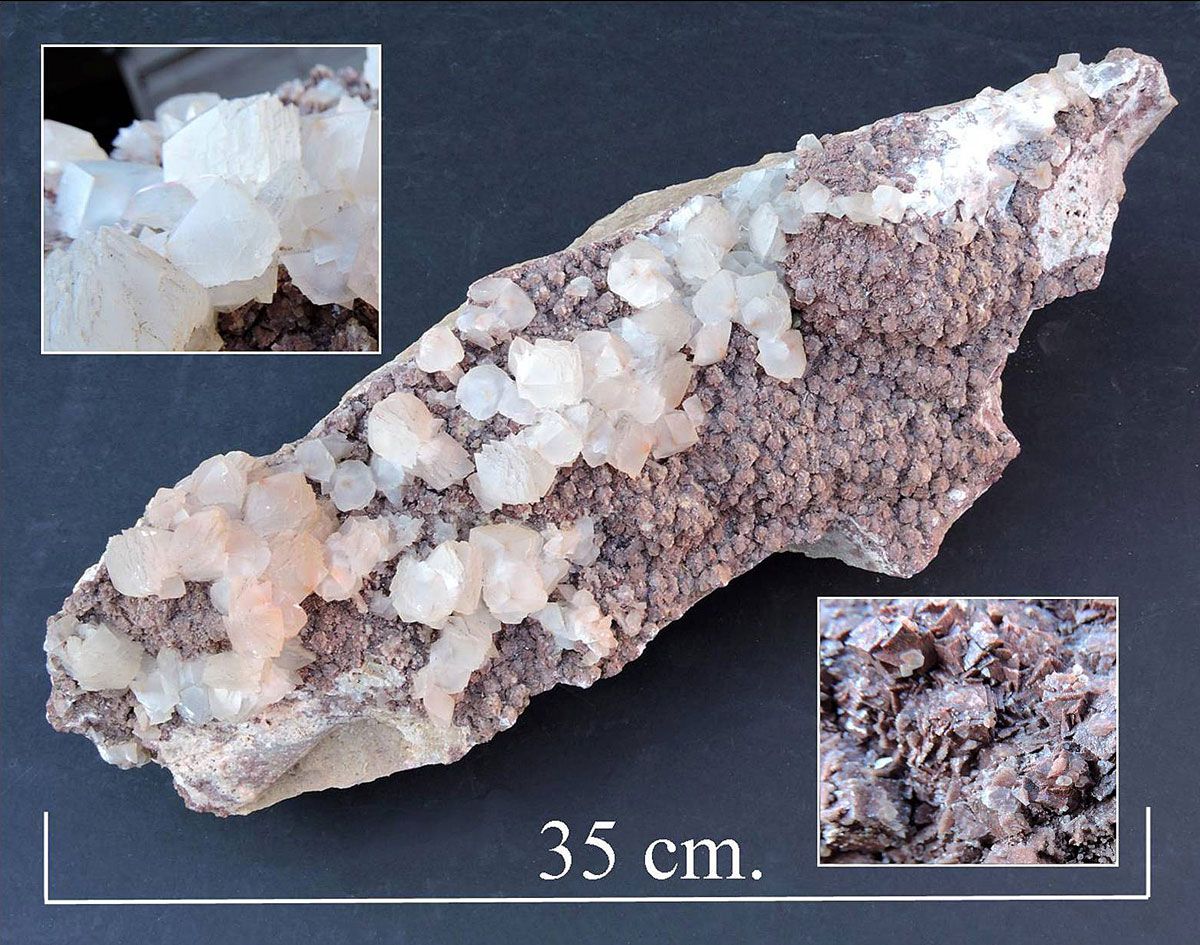
Calcite, Cregiau quarry.
Calcite, calcium carbonate, CaCO3. This is one of several specimens collected from Cregiau quarry, near Pentyrch in south Wales. A scattering of milky white crystals, mostly nailhead crystals, with a number of rhomboid crystals, are sitting on a bed of light brown calcite. The bed of brown calcite is in a form which is hard to describe, but seems to be rosettes made up of small bladed crystals growing in a haphazard arrangement.
